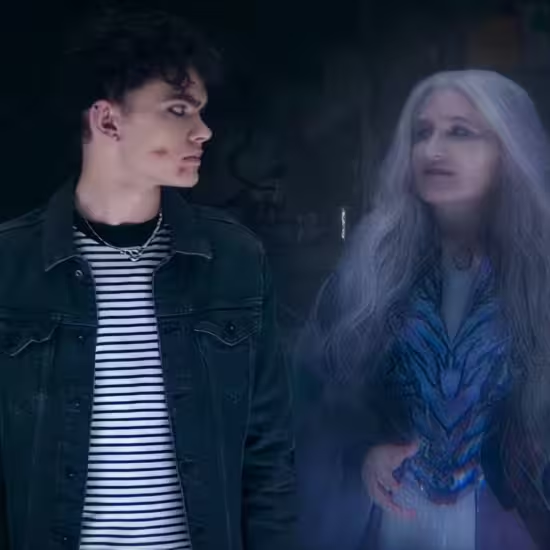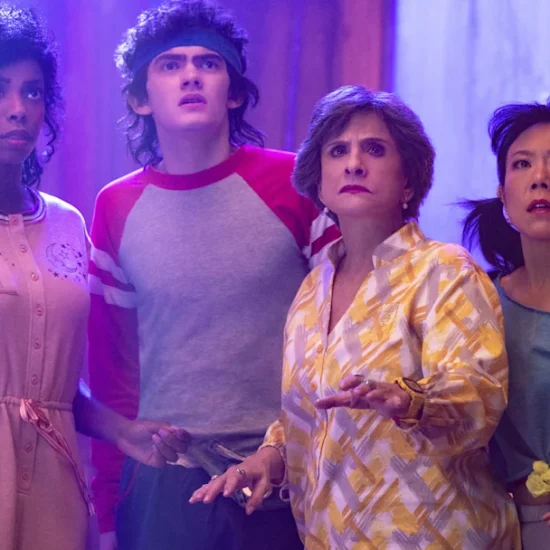
After Spider-Man: Across the Spider-Verse introduced the Spider-Man Variant known as Spider-Punk, the sequel’s directors explained why the character needed to be part of the cast.
Spider-Punk became one of the dozens of wild Spider-Man Variants to play a role in Spider-Verse 2, serving as a main Multiversal hero, helping out Miles Morales and Gwen Stacy in their inter-dimensional journey.
Black Panther star Daniel Kaluuya took on the challenging task of playing this new addition to Sony Pictures’ Spider-Verse, embodying a visually stunning hero that brought the punk and the funk to the elite class of Spider-People in this sequel.
Spider-Verse 2 Directors on Spider-Punk Inclusion
Discussing Film spoke with Spider-Man: Across the Spider-Verse directors Justin K. Thompson, Joaquim Dos Santos, and Kemp Powers about the inclusion of Daniel Kaluuya’s Hobie Brown, aka Spider-Punk, in the sequel.
Thompson highlighted the way that Spider-Punk needed to serve Miles Morales’ journey as “the antithesis of all these authority figures in Miles’ way:”
“Spider-Punk is voiced amazingly by Daniel Kaluuya. From the beginning, we thought it would be so cool for Miles to meet somebody on this journey who could support his idea of ‘writing your own story’ and who’s the antithesis of all these authority figures in Miles’ way. We looked at all the Marvel comics and found that in Spider-Punk with his punk rock nature and rejection of norms, authority, and traditional ideas.”
Going off those themes, this led the team to go wild in animating Spider-Punk, referencing how “a lot of punk rock art is done” by cutting up and piecing together different pieces of experimental art:
“So we thought, ‘Let’s let his animation style represent that too, and let’s try all these crazy experiments.’ It was cool because that’s kind of how punk rock zines and punk rock posters are, they’re like experimental art projects. The way a lot of punk rock art is done, they’re hand cut, pasted, drawn, glued together, and then xeroxed as well.”
Thompson continued to reveal the way that “crazy technical tools” were developed to give Spider-Punk an incredibly customized look “based on classic punk rock posters,” all of which only came together at the very end of production:
“We just thought, ‘What if that was actually what the character looked like?’ So we developed all these crazy technical tools. They start with this traditional animation pass, and then the tools that we developed can adapt all the different parts of him to all these different custom looks we created that are based on classic punk rock posters. And we can assign all these body parts very distinct emotional beats wherever we wanted them to appear like sudden visual changes. I think that process probably took two or three years to develop, and we really only came together like right at the end.”
Dos Santos looked back to the first test animation that he did for the hero, which was actually done off of “an interview with Daniel.”
Powers noted that this test came long before Kaluuya was cast in the role, which led the team to only hope that he would actually play the role in the final cut of the sequel:
“Yeah, before we cast Daniel Kaluuya, we did an animation test set to his voice in an interview. One of the interesting things about Spider-Punk is that he’s in motion even when he’s standing still. His visuals are dynamically in motion even when he’s not moving, it’s like those punk rock posters are still swapping out when he’s not in motion. But I remember that first animation test when it was just a Daniel Kaluuya interview on TV. I was like, ‘Well, I really hope we can get Daniel Kaluuya to voice this character because now we’re really building this thing around him.'”
Dos Santos highlighted the animation on Spider-Punk’s jacket which was “animated at a different frame rate” than the other parts of his body – something that broke many of animation’s normal rules:
“I will say another amazing thing before we continue is just Spider-Punk’s jacket is animated at a different frame rate oftentimes from the rest of his body. So sometimes when the perspective shifts hard enough, his jacket will just be held and then it will quickly pop to the next perspective. But his body and his head are moving at a different frame rate too. That fact alone is breaking a lot of rules for an animated film.”
How Will Spider-Punk Play Into Spider-Verse 3?
Warning – the rest of this article contains spoilers for Spider-Man: Across the Spider-Verse.
Hobie Brown certainly made his impact on Miles in Spider-Verse 2, especially coming in as a potential love interest for Gwen Stacy as she reunited with Miles in her wild trip through the Multiverse.
While Oscar Isaac’s Spider-Man 2099 and Issa Rae’s Jessica Drew were hellbent on taking him down and forcing him to live out his “canon event,” Spider-Punk was the one who taught him new things about his powers and even helped him escape custody later in the movie.
Now, fans are expecting to see this musically-inclined take on the web-slinger come back for more in 2024’s Spider-Man: Beyond the Spider-Verse, especially with Miles now stuck on Earth-42 and challenged with facing his doppelganger.
And with Jason Scwartzman’s The Spot still lurking as a threat to the entire Multiverse, Spider-Punk and the rest of the web-slingers will be ready to take on him and any new challenges that arise.
Spider-Man: Across the Spider-Verse is now playing in theaters worldwide.














